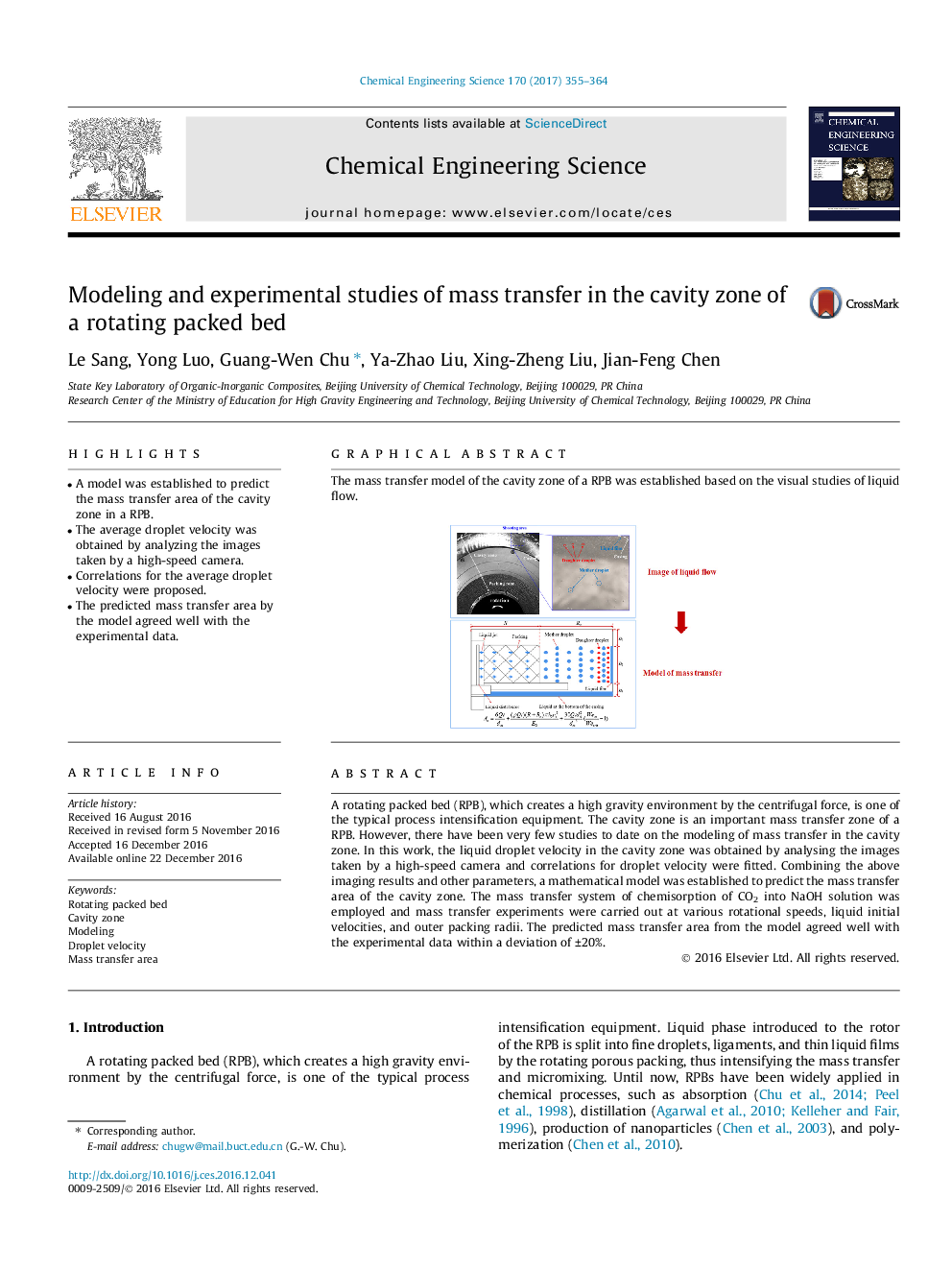| Article ID | Journal | Published Year | Pages | File Type |
|---|---|---|---|---|
| 6467252 | Chemical Engineering Science | 2017 | 10 Pages |
â¢A model was established to predict the mass transfer area of the cavity zone in a RPB.â¢The average droplet velocity was obtained by analyzing the images taken by a high-speed camera.â¢Correlations for the average droplet velocity were proposed.â¢The predicted mass transfer area by the model agreed well with the experimental data.
A rotating packed bed (RPB), which creates a high gravity environment by the centrifugal force, is one of the typical process intensification equipment. The cavity zone is an important mass transfer zone of a RPB. However, there have been very few studies to date on the modeling of mass transfer in the cavity zone. In this work, the liquid droplet velocity in the cavity zone was obtained by analysing the images taken by a high-speed camera and correlations for droplet velocity were fitted. Combining the above imaging results and other parameters, a mathematical model was established to predict the mass transfer area of the cavity zone. The mass transfer system of chemisorption of CO2 into NaOH solution was employed and mass transfer experiments were carried out at various rotational speeds, liquid initial velocities, and outer packing radii. The predicted mass transfer area from the model agreed well with the experimental data within a deviation of ±20%.
Graphical abstractThe mass transfer model of the cavity zone of a RPB was established based on the visual studies of liquid flow.Download high-res image (145KB)Download full-size image
